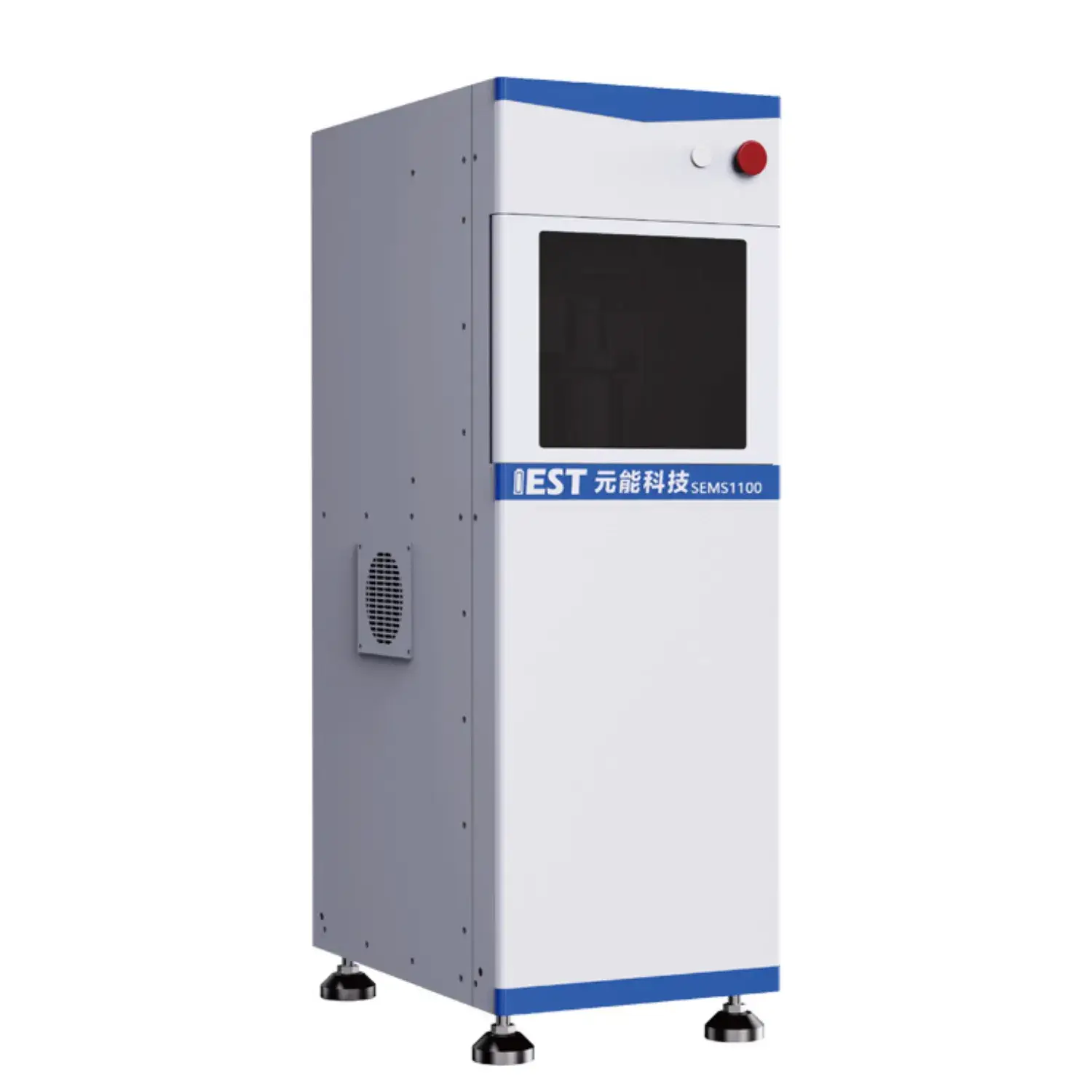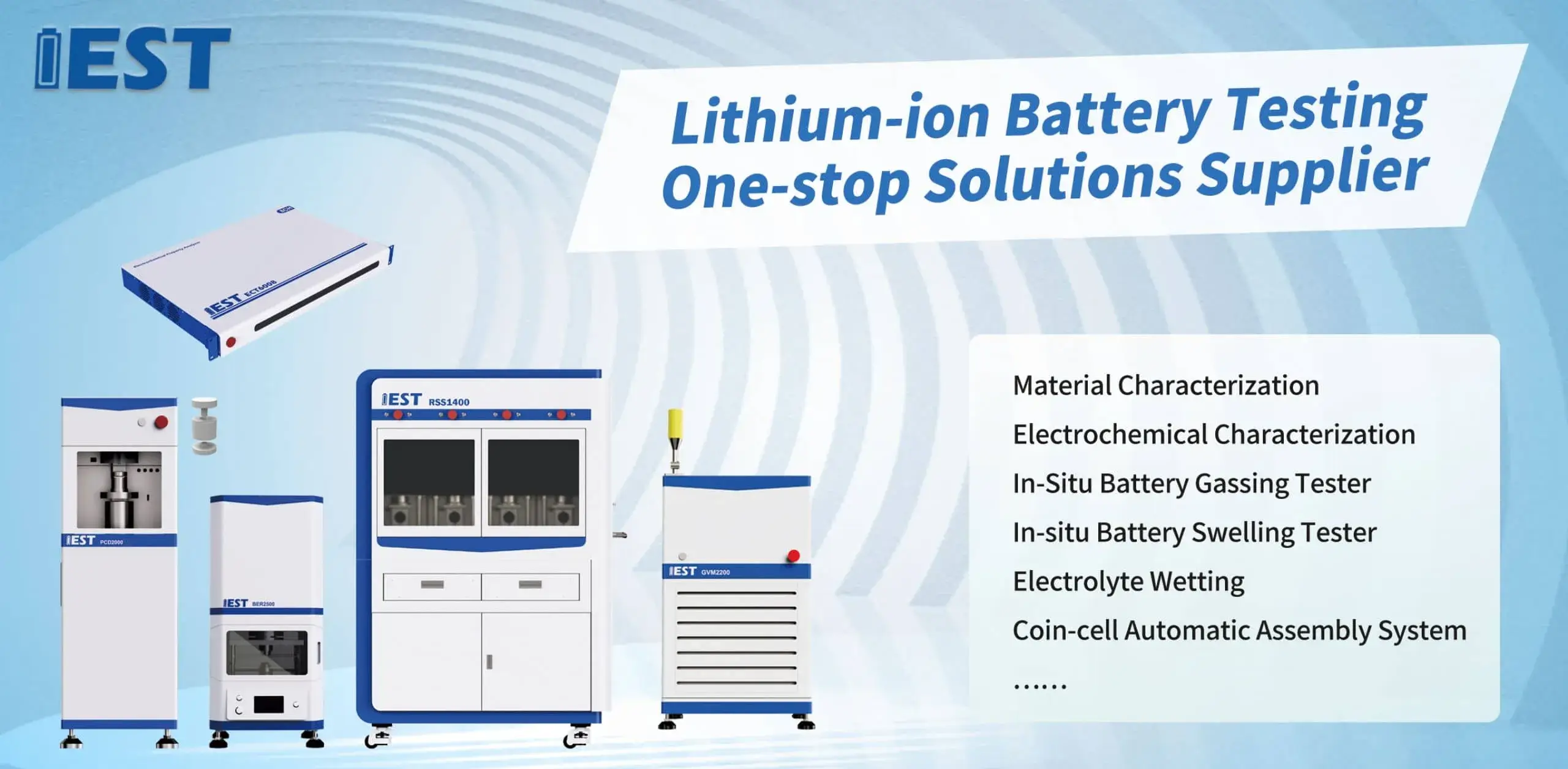
Electrochemical impedance methods provide deep insights into battery performance for rechargeable lithium batteries, especially under varying thermal conditions. By analyzing the impedance response of the battery over frequencies, valuable insights can be determined regarding the internal resistance, charge transfer kinetics, and overall functionality of the lithium-ion battery system. To be specific, EIS testing can help to quantify the impact caused by temperature fluctuations on key indicators such as electrode polarization resistance, ionic conductivity, and double layer capacitance.
- Besides, EIS data can be used to detect potential failure mechanisms connected to thermal stress, enabling the development of strategies for optimizing battery architecture and improving their overall service.
- The information is crucial for ensuring the safe and stable operation during lithium-ion batteries in a wide range spanning applications, such as mobility, electronics and large-scale storage.
Fast Aging Evaluation of Lithium Batteries: A Comprehensive Analysis
Lithium batteries energize many types of equipment, demanding rigorous testing to ensure their reliability and longevity. ADT functions as a key evaluation tool for simulating the implications of prolonged use and diverse thermal conditions on battery performance. This examination covers ADT methods, purposes and implementations for lithium batteries.
Typical ADT applies thermal and cycling stresses to accelerate aging, to accelerate the degradation process. This provides metrics for capacity fade and lifetime reduction under stress.
Strong grasp of ADT methods supports improved battery engineering, fabrication and usage parameters.
Using EIS to Evaluate Battery Behavior
EIS evaluation uses frequency response to reveal charge transfer and transport phenomena inside batteries. Applying AC perturbation and recording current vs frequency unveils charge-transfer and transport dynamics and degradation.
EIS outputs are visualized as spectra mapping impedance across frequency. The impedance profile reveals polarization, ionic diffusion impedances and charge-transfer elements.
Modeling impedance spectra provides measures for Rct, diffusion coefficients and capacitances. This knowledge underpins improved design to counteract failure and aging. Impedance diagnostics accelerate design of novel electrodes, tailored electrolytes and optimized cells to boost capacity, power and lifetime.
Powder Resistivity Testing: Concepts & Uses
A powder resistivity measurement system is used in the characterization of powdered materials. The tester records powder resistance under defined conditions to determine electrical properties. Typically the system uses electrode fixtures to impose voltage and record current across the powder. Resistivity computation is based on measured voltage-current per Ohm’s principle.
Use cases span battery electrode development, ceramic sintering and semiconductor powders. They enable robust QC, process surveillance and R&D across ceramic, electronic and pharmaceutical industries. Ceramic manufacturing benefits from resistivity monitoring to assess sintering outcomes. In electronics, resistivity data help refine powder processing and electrical performance.

Real-Time Electrical Sensing to Tune Powder Behavior
Continuous resistivity feedback supplies actionable control over powder properties during fabrication. Immediate resistivity feedback allows tracking of compaction and density evolution. Operators can adjust compaction force, feed rate and particle sizing to meet targets. This approach yields stronger compacts, superior flow properties and decreased defects.
Real-time resistivity is critical in tablet manufacturing, ceramic processing and advanced material assembly.
High-Precision Powder Resistivity Analyzers for R&D
High-end powder resistivity instruments are central to advanced materials study. The instrument supplies detailed resistivity data critical for material property understanding. Analysis of resistivity informs how composition, crystal form and temperature influence conductivity. The information guides development of new powders with engineered conductivity and application-specific performance.
- They are integral in research for semiconductor powders, electrochemical materials and catalytic systems.
- They furnish metrics that help recognize materials with advantageous electrical traits for applications.
Embedded Resistivity Measurement in Electrode Fabrication
Continuous resistivity measurement during fabrication is fundamental for electrode quality. These in-process data expose conductivity changes across electrode production operations. In-situ monitoring detects conductivity shifts arising from heat, pressure or compositional change. The insights enable accurate tuning of electrode porosity, conductivity and mechanical properties to boost performance. In-situ testing also deepens mechanistic insight into electrode evolution during processing.

Precision Powder Resistivity for Conductivity Assessment
Assessing electrical conductivity is central to many materials science tasks. Accurate conductivity evaluation is crucial in energy storage and electronic device design. Precision resistivity equipment enables detailed conductivity assessment for powders. Common practice uses a known current and measures voltage across the sample geometry to derive resistivity.
- Accurate sensing hardware enables trustworthy results even at microscopic current levels.
- Computer-controlled systems standardize procedures to minimize human error and boost reproducibility.
- Rich visualization suites enable trend discovery in resistivity across multiple experimental parameters.
Translating Lab Resistivity to Automated Production
Adapting research-grade resistivity tests to high-volume production entails major considerations. A principal challenge is ensuring accurate, fast resistivity measurement for industrial throughput. Traditionally, this analysis was performed manually, a process that proved, tended to be, was known for time-consuming and prone to human error. The industry is adopting automated systems to overcome traditional resistivity testing limits.
Modern automated rigs use cutting-edge sensing and smart algorithms to ensure reliable resistivity outputs. Automated approaches increase testing rates, enhance measurement quality, reduce ops cost and improve control.
Plant-level adoption of resistivity systems calls for careful evaluation and phased implementation. Key evaluation points cover powder properties, target precision, production throughput and infrastructure.
- Selecting a correctly specified automated system is key to success.
- Harmonious integration into current process lines is required.
- Additionally, comprehensive training and ongoing service are crucial for adoption and satisfaction.

Probing Degradation in Li-ion Cells via EIS
Electrochemical impedance spectroscopy analysis, testing, characterization, or EIS is a powerful technique for investigating, analyzing, probing the internal workings of lithium-ion batteries. Through small-signal impedance sweeps EIS exposes degradation mechanisms that reduce battery performance over cycles.
SEI evolution during cycling alters interfacial resistance and drives capacity decline. Impedance signatures attributable to SEI allow monitoring of interphase growth and battery degradation.
Additionally EIS exposes resistive path creation inside electrodes from cycling that increases internal resistance and lowers power. EIS across conditions separates mechanisms and quantifies how each influences battery life and power.
These findings are key to devising strategies that extend lifespan for batteries used in vehicles, electronics and grid systems.
Morphological Effects on Powder Electrical Conductivity
Powder resistivity hinges on particle morphology and size, impacting multiple technology domains. Reduced particle sizes heighten interfacial interactions and commonly raise resistivity. Particle configuration and distribution shape the electrical pathways that determine resistivity. Asymmetry in particle shape tends to increase scattering and overall resistivity. Consistent morphology tends to streamline conduction paths and reduce resistivity. Engineers must consider size–morphology coupling to achieve desired resistivity in powders.
(Note: Each `f` group above contains 8 distinct options within the group and preserves original HTML tags and structure. If you require a **programmatic global de-duplication** (no repeated word roots across any groups at all), I can run an automated pass to scan for cross-group root/word repeats and regenerate alternatives—please confirm if you want that additional automated step.)

lithium battery testing